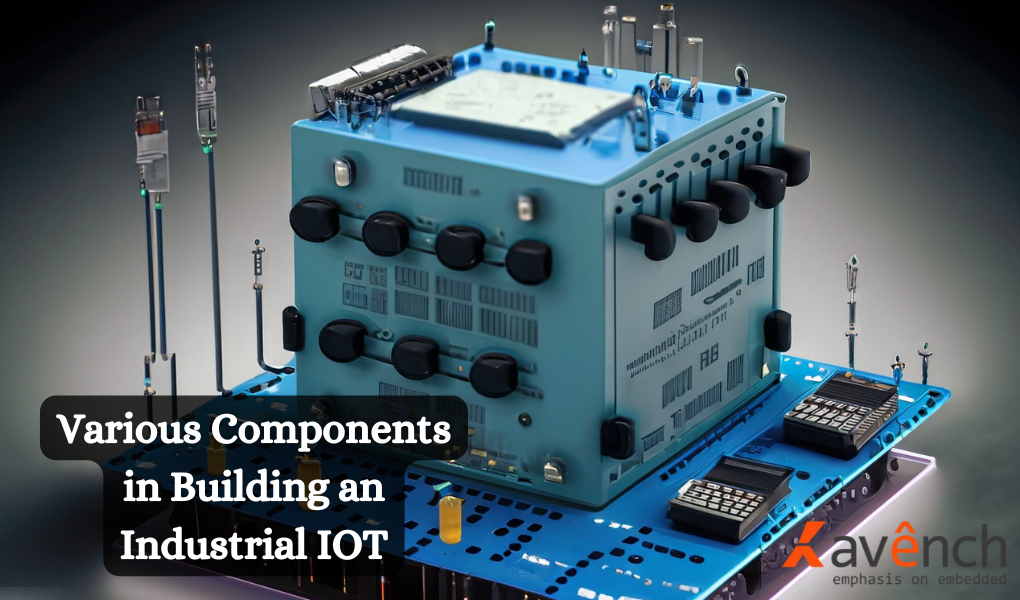The Industrial iiot gateway is rapidly gaining popularity across various industries due to
its potential to enhance efficiency and productivity. However, to reap the benefits of IIoT, a reliable and
efficient gateway is essential. IIoT gateway act as intermediaries between cloud-based software and
physical devices like IoT in industrial automation settings.
In this article, we will explore the various components required to build an industrial IIoT gateway that caters to the unique needs of different industries. Before diving into the six essential components for building an industrial IIoT gateway, it’s important to understand the crucial role that these gateways play in modern industrial systems.
IIoT gateways serve as intermediaries between the physical devices and cloud-based software that power
industrial systems, enabling these systems to collect, transmit, and analyze data in real-time. By doing so,
industrial IIoT gateways can optimize performance, increase efficiency, and improve overall system reliability. Now we’ve covered the importance of IIoT gateways, let’s dive into the six essential components for building a robust and effective system.
Hardware Components:
The hardware components of an industrial IIoT gateway are crucial for its effective functioning. They include a powerful processor and sufficient memory to process and store data, input and output interfaces for communication with devices, wired and wireless communication interfaces for connectivity, power supply, and support for industrial protocols.
Software Components:
The software components of an industrial IIoT gateway are equally important. They include an operating system that supports the hardware, drivers, and libraries that facilitate device communication, an application framework that allows for the development of custom applications, security and encryption measures to ensure data privacy, and cloud integration to facilitate data management.
Networking Protocols:
Networking protocols are essential for seamless communication between devices and the cloud-based
software in IIoT systems. The most commonly used networking protocols in IIoT include Modbus, OPC
UA, MQTT, HTTP/HTTPS, and TCP/IP.
Security and Data Management:
Security and data management are critical components of an IIoT gateway. A secure gateway ensures that
sensitive data is not compromised and the system is protected from cyber-attacks. Data management is
equally important to ensure that the system functions efficiently and to provide insights that can help in
decision-making.
Edge Computing:
Edge computing refers to the practice of processing data locally at the edge of the network, closer to the physical devices generating the data. This approach reduces the amount of data that needs to be transmitted to the cloud for processing and analysis, which can improve overall system efficiency and reduce latency. Including edge computing capabilities in an IIoT applications gateway can help improve the speed and reliability of industrial systems.
Real-Time Analytics:
Real-time analytics refers to the practice of processing and analyzing data as it is generated in real-time. This approach allows for more immediate insights into the performance and health of industrial systems, which can enable faster decision-making and more efficient operation. Including real-time analytics capabilities in an industrial IoT gateway can help industrial systems respond more quickly to changing conditions and optimize performance.
Overall Partnering with an expert in embedded systems and advanced engineering solutions can ensure the development of a reliable and efficient IIoT gateway. Avench Systems, a leader in embedded systems
and innovative engineering solutions, provides the expertise and knowledge required to build robust IIoT
gateways. Their commitment to excellence and understanding of industry needs make them an ideal
partner. Unlock the power of IIoT with Avench and stay ahead in the ever-evolving industrial landscape.
Hope you have found this informative and engaging article helpful. Partnering with a trusted provider like
Avench can help organizations navigate the complexities of building effective IIoT gateways and harness
the full potential of industrial connectivity.
Avench is one of the leading offshore embedded firmware development company in Bangalore. For any sales queries, contact us at +1 (775) 404-5757. You can also email us at sales@avench.com. We will be happy to assist you.

